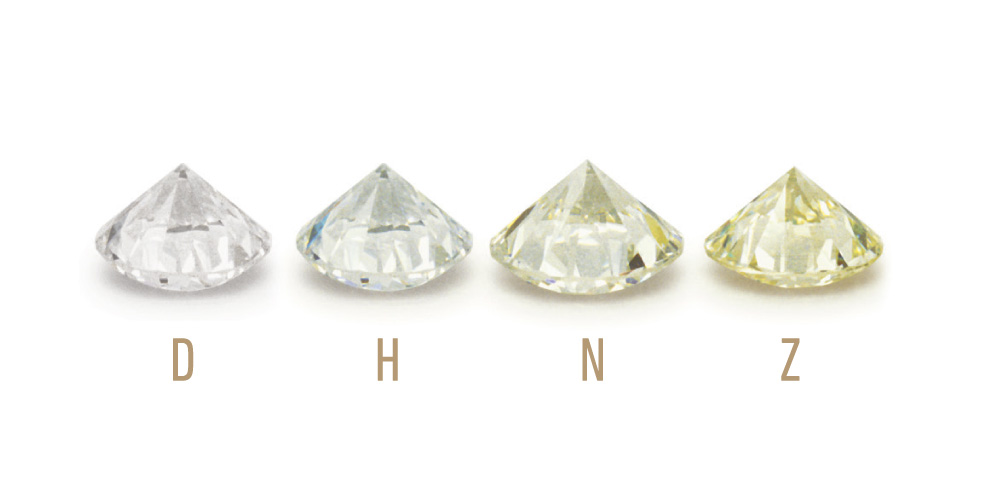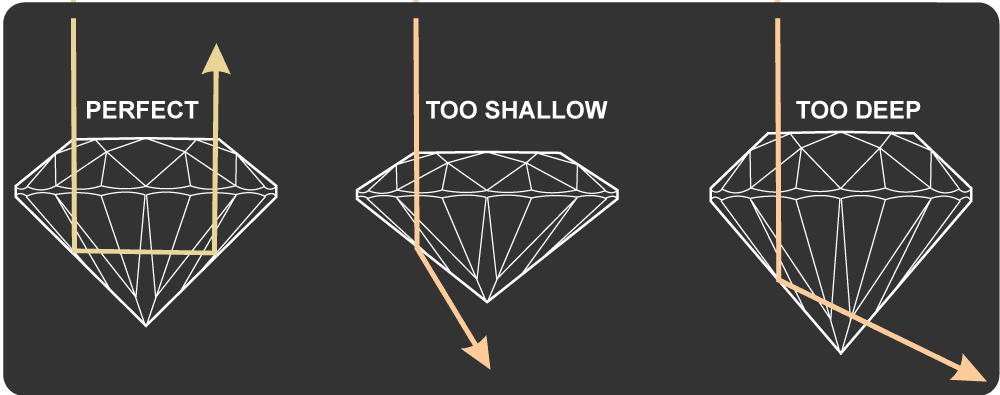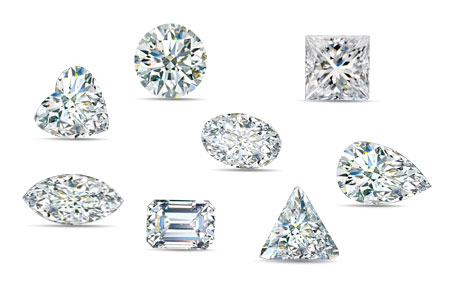4 C's of Diamonds
There’s a universal system of grading diamonds called the “4 C’s.” Knowing this system is important to understand the basics, and it’s a good starting point for choosing a diamond. There are many other factors not included in the 4 C’s though (such as the types of inclusions and where they are), so it’s always best to use this system as a guide, and then to still judge a diamond with your own eyes. At our Edmonton store, we try to show our customers multiple diamonds that are within their specifications, and compare them under the microscope.
Carat
The weights of diamonds and gemstones are measured in carats. 1 carat is equal to 200 milligrams. When measuring diamonds, a round brilliant diamond that's 1 carat in weight should measure approximately 6.5 mm in diameter. Typically, the more a diamond weighs, the higher its value. Large diamonds can be very rare, so the value typically increases exponentially. For example, a 1 carat diamond could be worth twice as much as a 0.75 carat diamond of the same quality. Most of the rings that Adamas Goldsmiths has in stock are designed to hold a 0.75 to 1 carat diamond, but they can be altered to fit any size that you like. Adamas Goldsmiths also has access to any size of diamond for our customers.

Clarity
The amount of imperfections or “inclusions” affects a diamond’s clarity grade. This is mostly up to opinion, but most trained gemologists should be somewhat close on their judgement. Clarity grade doesn’t take into account the types of inclusions and where they are in the stone, which are very important factors. At Adamas Goldsmiths, we try to only carry diamonds that have inclusions that are harder to see.

Diamond Clarity Designations Explained:
FL - "Flawless" - No inclusions at 10x magnification. Extremely rare.
IF - "Internally Flawless" - No inclusions at 10x magnification, but has small external blemishes.
VVS-1 - "Very Very Slightly Included" - Inclusions are extremely difficult to see at 10x magnification.
VVS-2 - "Very Very Slightly Included" - Inclusions are still extremely difficult to see, but slightly easier than VVS-1.
VS-1 - "Very Slightly Included" - Inclusions are difficult to see at 10x magnification.
VS-2 - "Very Slightly Included" - Slightly easier to see inclusions than VS-1 .
SI-1 - "Slightly Included" - Inclusions are relatively easy to find at 10x magnification, but still invisible to the naked eye.
SI-2 - "Slightly Included" - Inclusions may or may not be very slightly visible to the naked eye.
SI-3 - "Slightly Included" - Not a grading that is recognized by the GIA, but sometimes used due to the large difference between SI-2 and I-1.
I1 to I3 - "Included" - Inclusions are visible without a microscope.
The most common clarities that we carry are between VS-2 and SI-2, but we have access to all kinds.
Colour
When it comes to diamonds, less colour is usually better. The best colour grade is D, which is completely colourless. The examples below show how the GIA grading system works. Diamonds can have any letter grade from D to Z.

Chemical impurities within the crystal cause the colour in diamonds. Again, the colour grade is somewhat based on opinion. Most of the diamonds we carry are H and above, because they look white under most lighting conditions, as long as they’re graded strictly.
Some diamonds that are found in the earth have a deep colour, and are sought-after because of it. The most common fancy coloured diamonds are yellow (canary), pink, champagne, black, or brown (chocolate). Naturally coloured diamonds are very rare, but many of the colours can be created artificially.
Cut
Cut grade (usually only used on round brilliant diamonds) refers to how close the diamond is to the perfect measurements. If a diamond is cut perfectly, it will reflect the most light.

There is no universal system for cut grade, although most people follow the GIA terms, with excellent being the best, then very good, good, fair, and poor. We typically carry diamonds that are very good cut or better, otherwise that can appear a little dull.
The proper round brilliant cut has 58 facets, as seen in the following diagram:

Diamonds can be cut in many different shapes as well. Since these shapes typically wouldn’t have a cut grade, it’s always a good idea to judge them yourself with your own eyes, since they can vary a lot depending on their dimensions.

Adamas Goldsmiths carries almost any type of diamond, so let us know if you’re interested or have any questions. Our showroom number is 780-482-4822. Thanks for reading!
